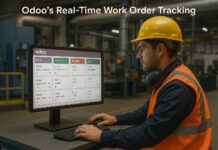From Manual to Automated: Transforming Business Processes with Tech
In the dynamic landscape of modern business, the transition from manual to automated processes has become a cornerstone for efficiency, growth, and competitive advantage. This evolution is made possible by leveraging cutting-edge technologies, including automation services and ERP software solutions. In this article, we delve into how businesses are navigating this journey, harnessing technology to streamline operations and enhance overall performance.
The Manual Challenge:
Traditional manual processes, while ingrained, are often inefficient, error-prone, and limiting in scalability. Businesses dealing with manual workflows frequently encounter bottlenecks, data silos, and challenges adapting swiftly to changing market dynamics. Recognizing these limitations, many enterprises are embracing technology solutions to propel their operations into the digital age.
Automation Services:
Automation services stand out as a pivotal step in the transformation from manual to automated processes. These services utilize technology to streamline repetitive tasks, reduce errors, and enhance operational efficiency. From automating routine data entry to orchestrating complex workflows, automation services empower businesses to redirect human resources toward strategic, value-added activities. This shift not only accelerates processes but also minimizes the risk of human error, contributing to enhanced overall reliability.
ERP Software Solutions:
Enterprise Resource Planning (ERP) software solutions represent a holistic approach to business automation. These integrated systems consolidate and streamline core business processes, including finance, human resources, inventory management, and more. By adopting ERP software solutions, businesses eliminate data silos, enhance collaboration, and gain real-time insights into their operations. An ERP consultant plays a vital role in guiding businesses through the selection, implementation, and optimization of ERP systems, ensuring a tailored fit to the organization’s needs.
Navigating the Transformation:
The transformation from manual to automated processes requires a strategic approach. It begins with a comprehensive assessment of existing workflows, identifying pain points, and understanding the specific needs of the business. Automation services and ERP software solutions are then integrated in a phased manner, ensuring a smooth transition without disrupting day-to-day operations.
Key Benefits of Automation:
Enhanced Efficiency: Automation streamlines processes, reducing the time and effort required for routine tasks.
Improved Accuracy: Automation minimizes the risk of human error, leading to more accurate data and processes.
Scalability: Automated systems are designed to scale with business growth, ensuring adaptability to changing demands.
Data Visibility: ERP solutions provide real-time visibility into business operations, enabling informed decision-making.
Resource Optimization: Human resources are redirected from manual, repetitive tasks to strategic, value-added activities.
Conclusion:
The journey from manual to automated processes is a transformative leap for businesses aiming to thrive in the digital age. Leveraging automation services and ERP software solutions, organizations can not only streamline operations but also position themselves for sustained growth and success. Embracing technology-driven automation is not just a modernization strategy; it’s a strategic imperative for businesses looking to stay agile, competitive, and resilient in an ever-evolving business landscape.




































